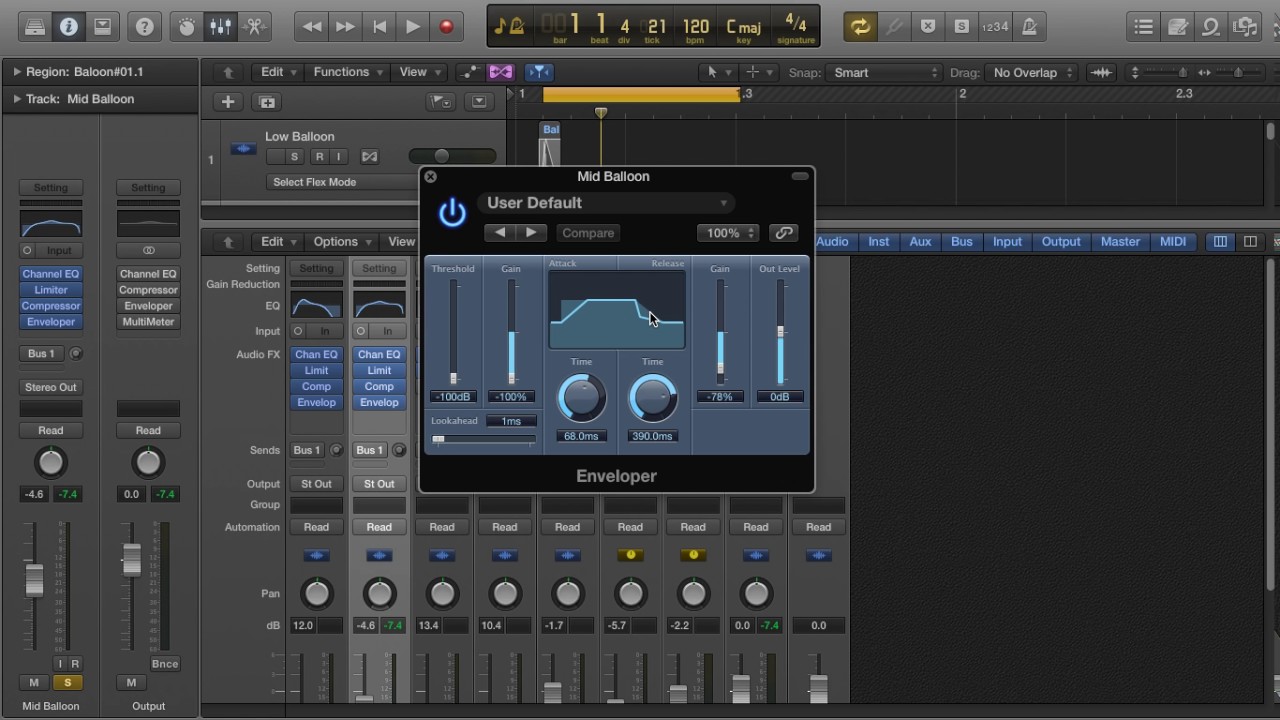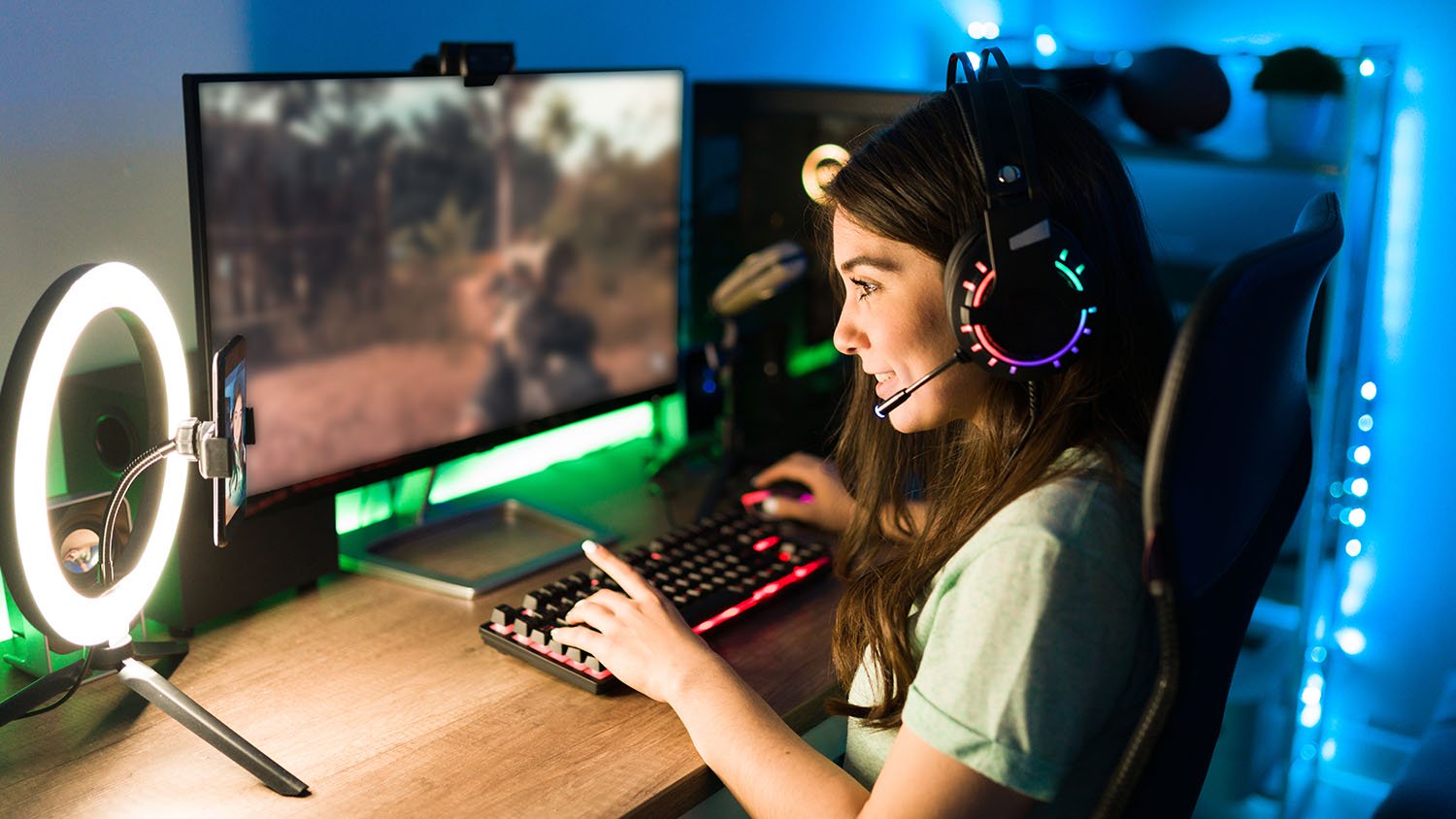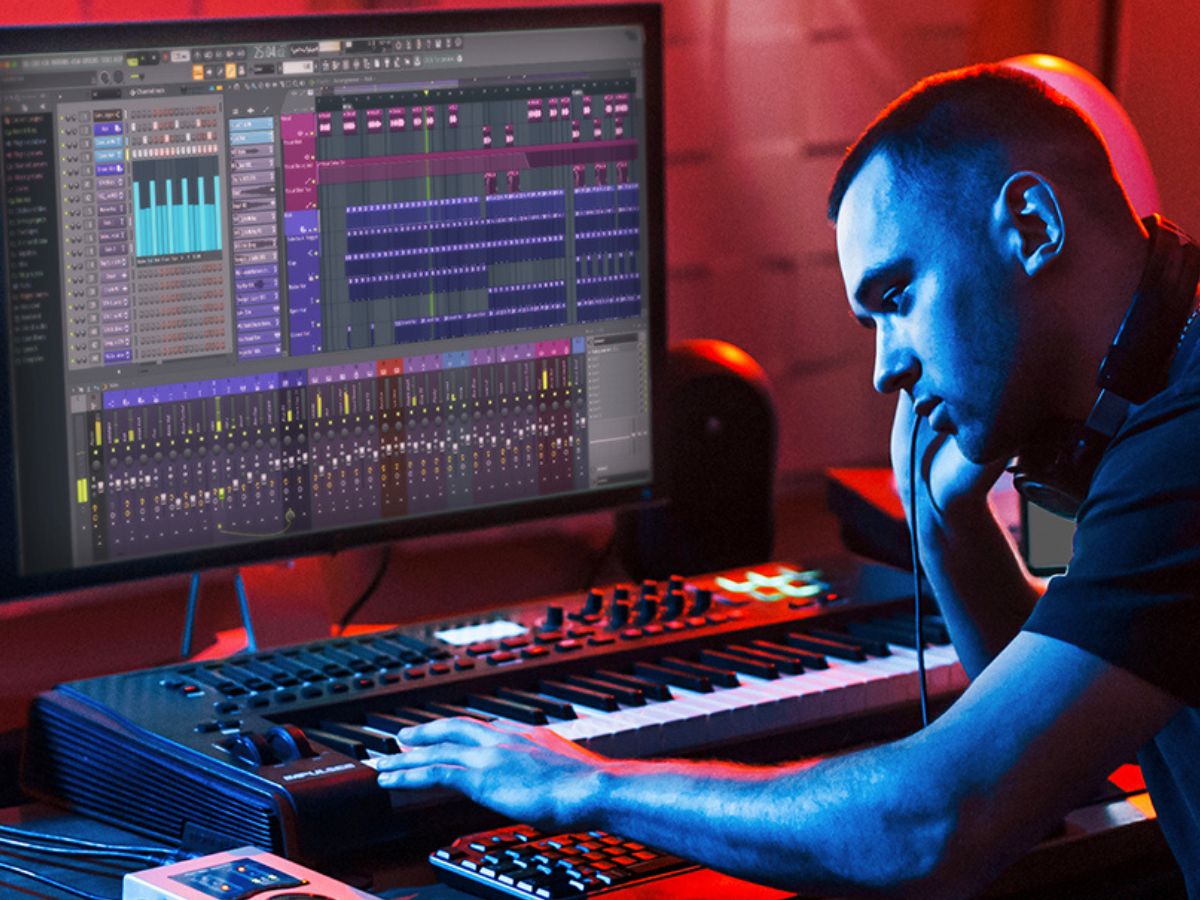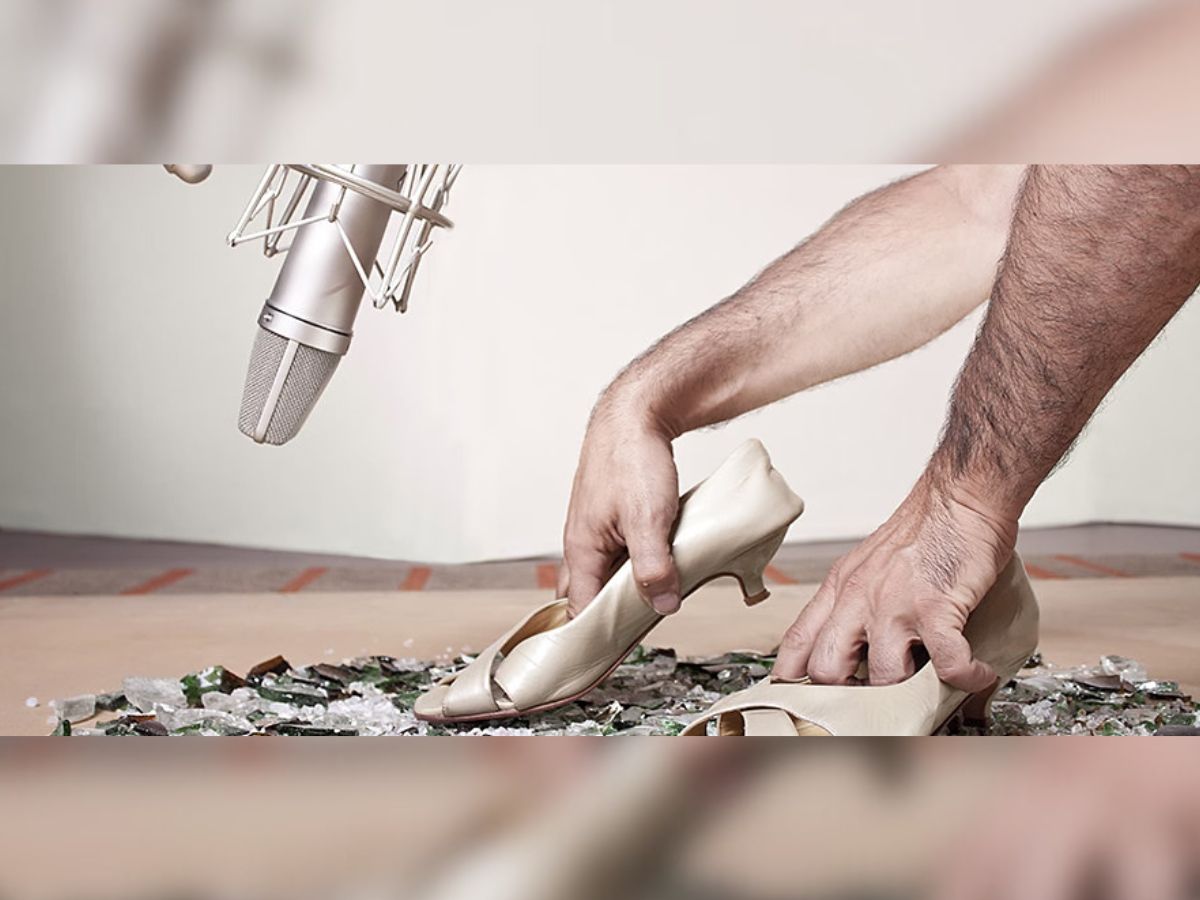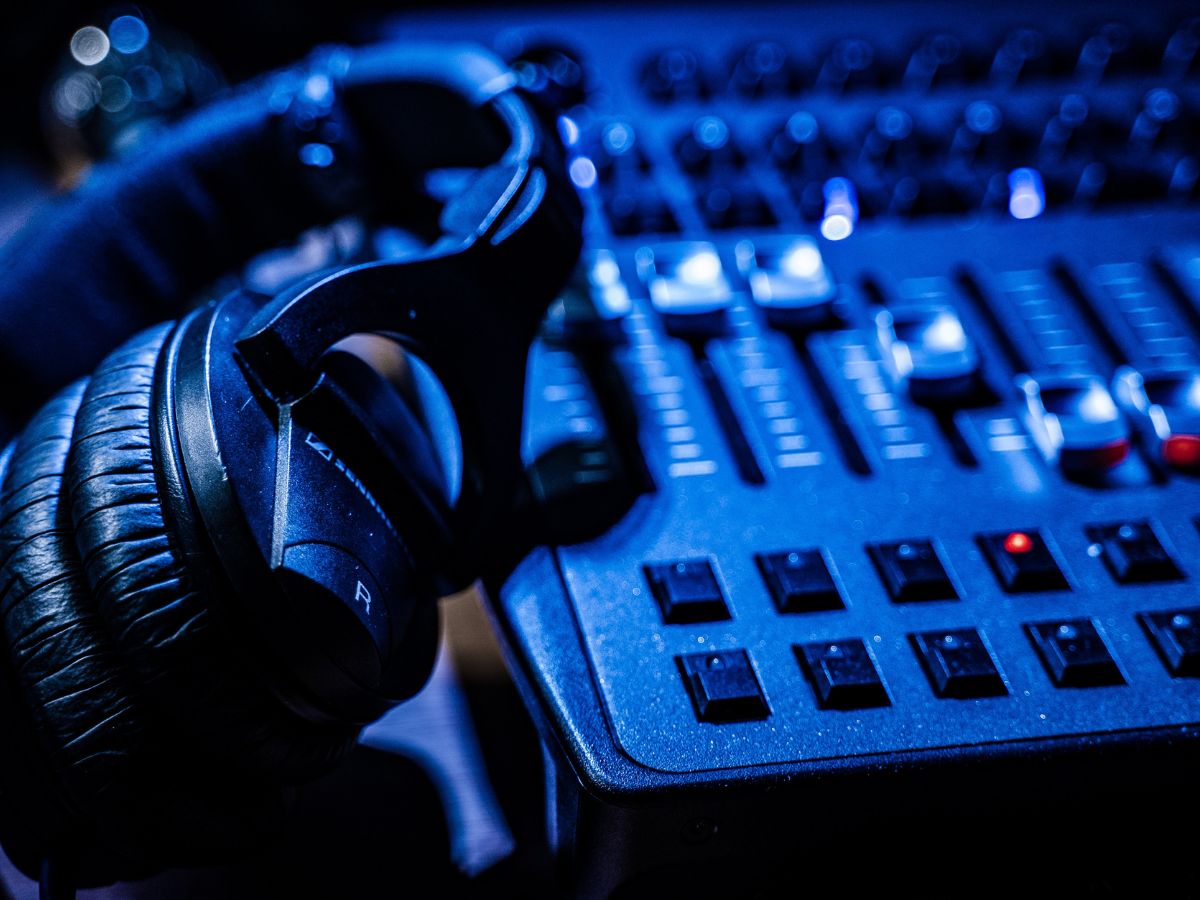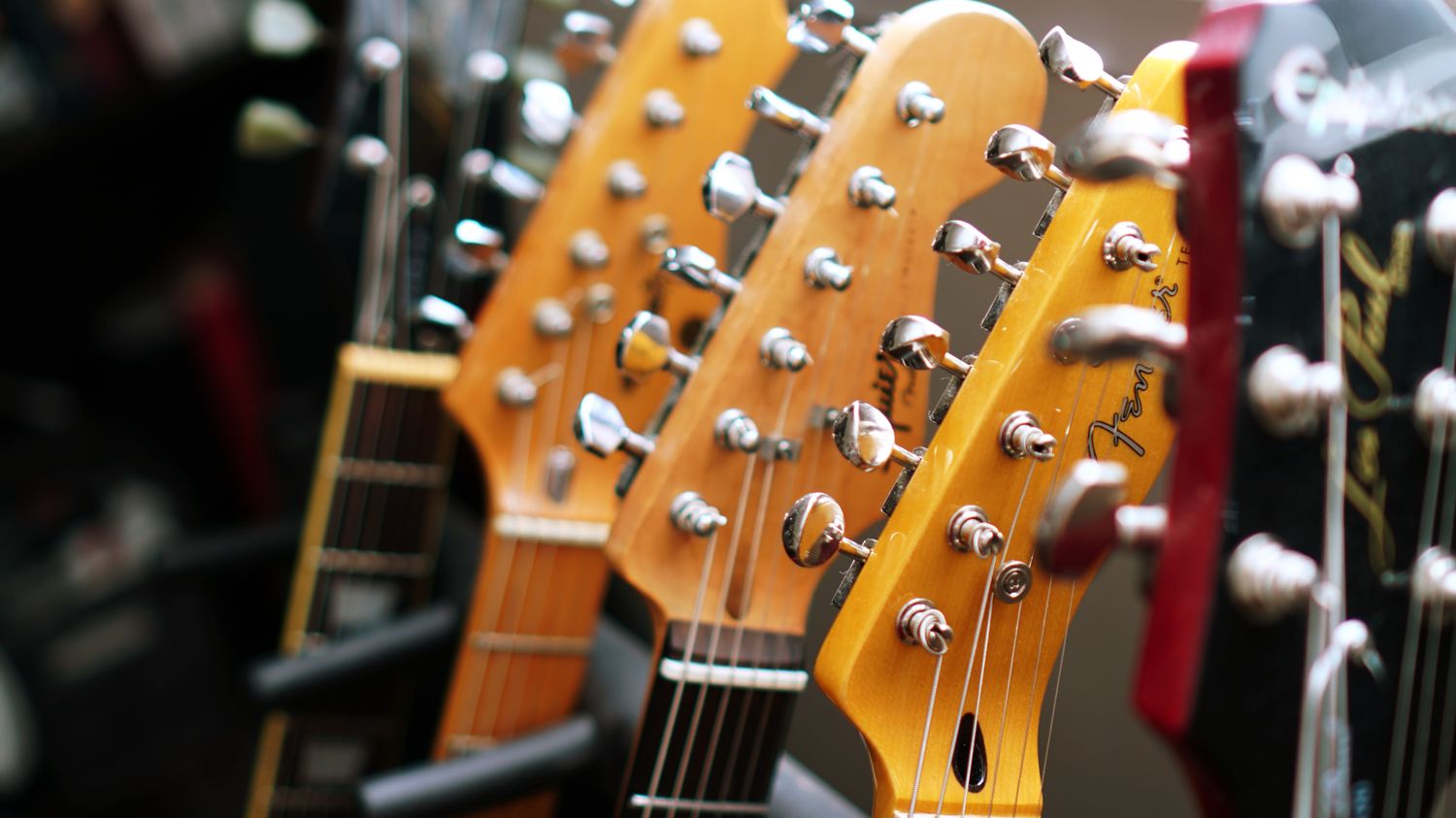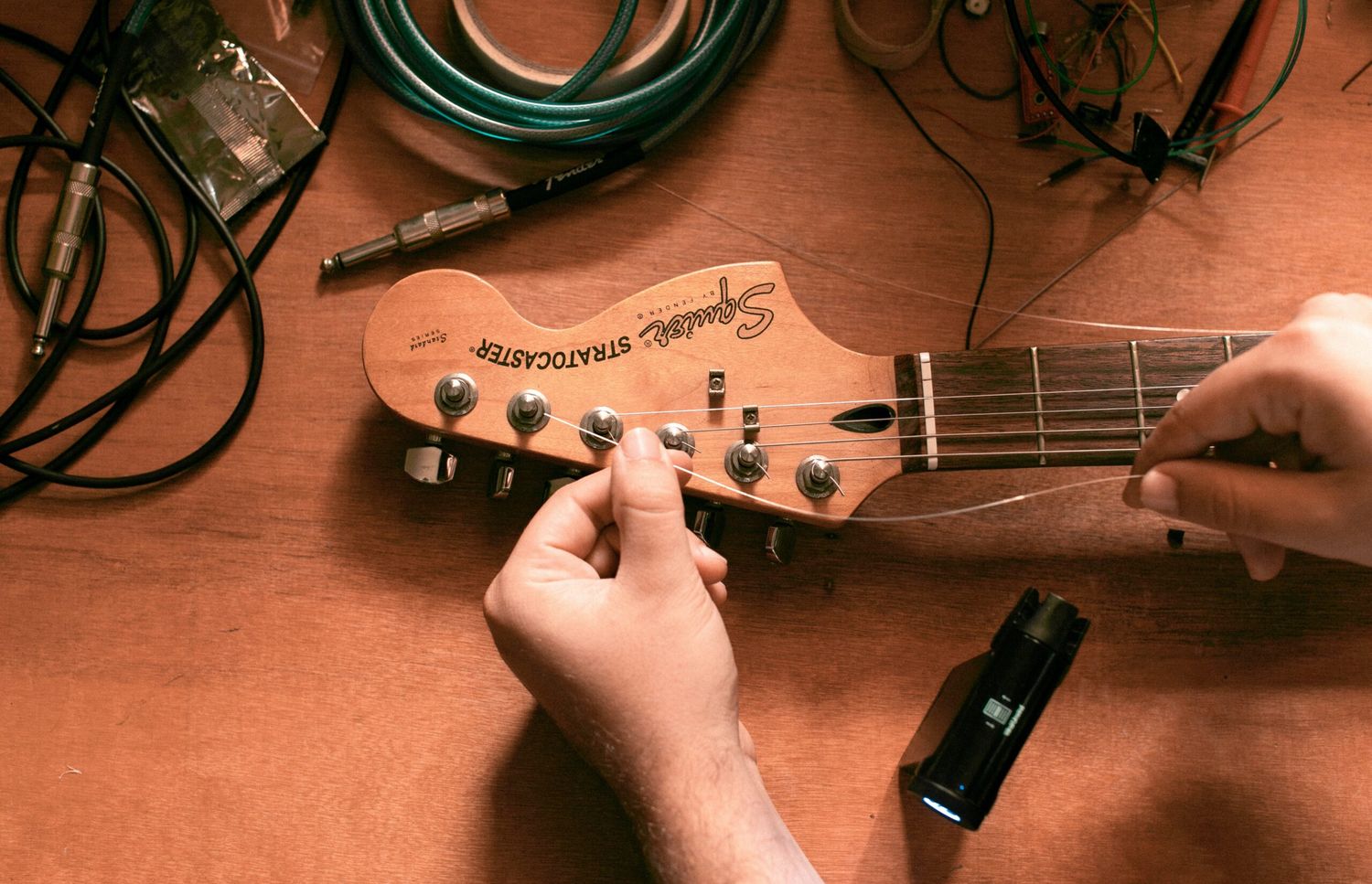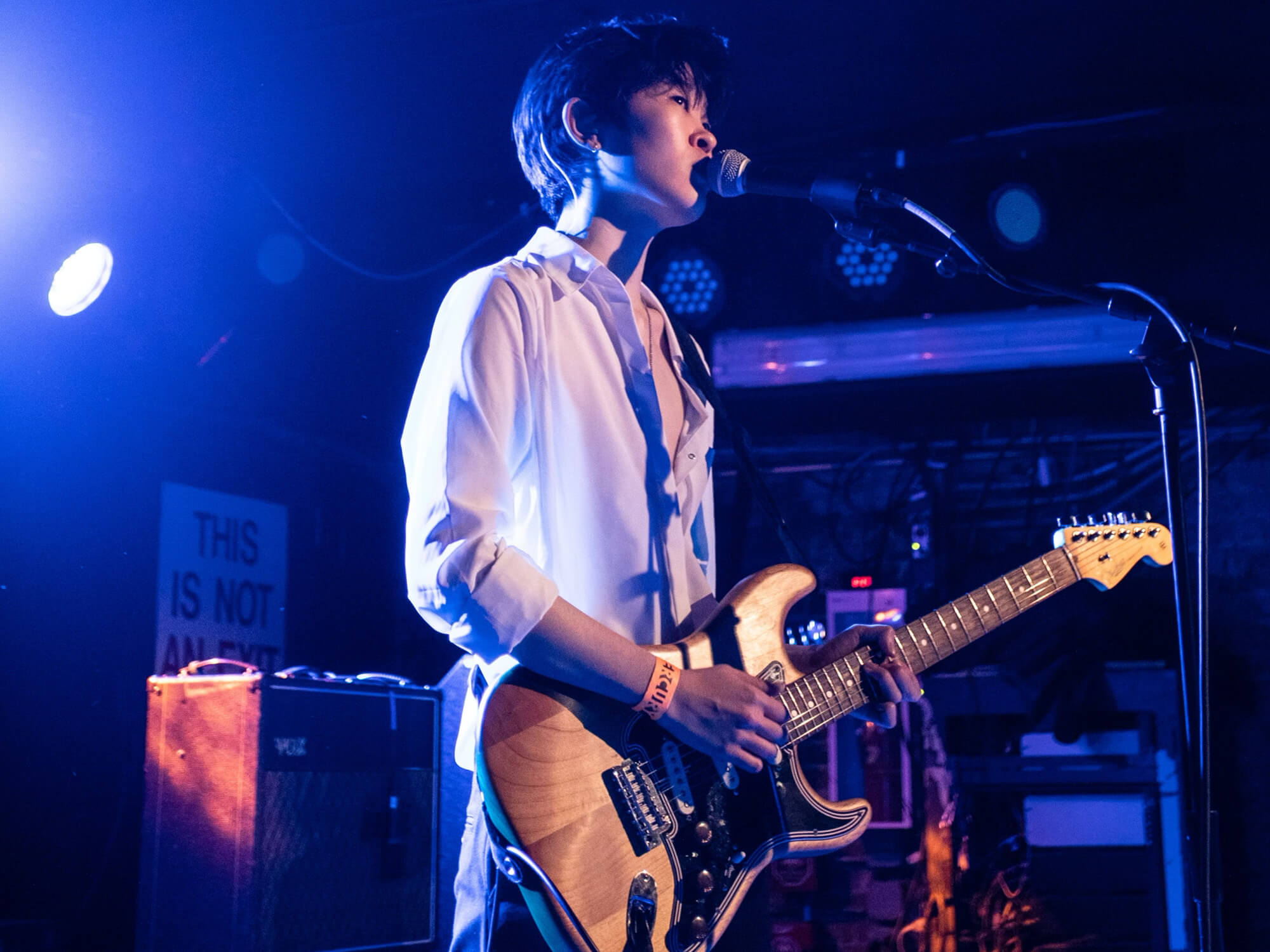Home>Production & Technology>Sound Effects>How To Make Cool Sound Effects On Electric Guitar


Sound Effects
How To Make Cool Sound Effects On Electric Guitar
Modified: February 15, 2024
Learn how to create amazing sound effects on your electric guitar using simple techniques. Enhance your music with unique and cool sounds.
(Many of the links in this article redirect to a specific reviewed product. Your purchase of these products through affiliate links helps to generate commission for AudioLover.com, at no extra cost. Learn more)
Table of Contents
- Introduction
- Choosing the Right Equipment
- Amplifier Settings for Cool Sound Effects
- Utilizing Guitar Effects Pedals
- Techniques for Creating Unique Sound Effects
- Using Distortion and Overdrive Effects
- Creating Ambient Soundscapes with Reverb and Delay
- Incorporating Whammy Bar and Dive Bomb Effects
- Exploring Pitch-Shifting and Octave Effects
- Tapping into the Power of Wah-Wah Pedals
- Conclusion
Introduction
Playing the electric guitar is an exciting and dynamic experience, allowing musicians to express their creativity through the powerful sounds and melodies they can produce. While mastering the technical aspects of playing is crucial, adding cool sound effects to your repertoire can take your guitar playing to the next level and captivate your audience.
From bold distortion to shimmering reverb, there are countless sound effects that can be achieved on the electric guitar. These effects can add depth, texture, and excitement to your music, helping you to stand out from the crowd and create a unique sonic signature. Additionally, sound effects can be used to evoke specific emotions or create atmospheres, further enhancing the impact of your performance.
In this article, we will explore various techniques and equipment that can help you create cool sound effects on your electric guitar. Whether you are a beginner or an experienced guitarist looking to expand your sonic palette, these tips and tricks will provide you with the knowledge and inspiration you need to experiment and create your own unique guitar sounds.
So, grab your electric guitar, plug it into your amp, and get ready to dive into the world of cool sound effects. Whether you’re playing rock, blues, jazz, or any other genre, incorporating these effects into your playing will undoubtedly elevate your musical experience and impress your listeners. Let’s get started!
Choosing the Right Equipment
When it comes to creating cool sound effects on your electric guitar, having the right equipment is essential. Here are some key factors to consider when selecting your gear:
- Guitar: The type of guitar you choose can have a significant impact on the sound effects you can achieve. Different pickups, body styles, and tonewoods can produce distinct tones. Experiment with different guitars to find one that suits your desired sound.
- Amplifier: A quality amplifier is crucial for achieving desired sound effects. Consider the wattage, speaker configuration, and built-in effects offered by the amplifier. Tube amps are often preferred for their warm, natural tone.
- Effects Pedals: Effects pedals play a vital role in shaping your guitar’s sound. Start with essential pedals like overdrive, distortion, delay, and reverb. As you become more experienced, you can explore additional pedals like chorus, phaser, and tremolo to expand your sonic possibilities.
- Quality Cables: Don’t overlook the importance of high-quality cables. Cheap or worn-out cables can degrade your signal and affect the overall sound quality. Invest in durable cables that will provide a clean, noise-free connection between your guitar and amplifier.
Keep in mind that there is no one-size-fits-all approach to equipment selection. The best gear for creating cool sound effects depends on your personal preferences and desired musical style. Experimentation is key – try out different combinations of guitars, amplifiers, and effects pedals to find the setup that inspires you and allows you to achieve the sound you’re after.
Lastly, don’t forget about maintenance. Keeping your equipment in good condition is crucial for optimal sound quality. Regularly clean your guitar, replace old strings, and ensure that your pedals and amplifier are free of dust and debris. Taking care of your gear will not only prolong its lifespan but also ensure that you consistently get the best performance out of your equipment.
Amplifier Settings for Cool Sound Effects
The amplifier is the heart of your electric guitar setup and plays a crucial role in achieving cool sound effects. Here are some tips for dialing in the right amplifier settings to enhance your sound:
- Gain and Volume: Experiment with the gain and volume controls on your amplifier to create different levels of distortion and overdrive. Increase the gain for a heavier, more aggressive sound, and adjust the volume to find the right balance between your guitar’s natural tone and the desired level of distortion.
- Tone Controls: Most amplifiers are equipped with tone controls such as bass, mid, and treble. These controls allow you to shape the frequency response of your guitar’s sound. Adjusting the bass can add depth and warmth, while increasing the treble can provide brightness and clarity. Play around with these settings to find the right balance for your sound effects.
- Presence Control: The presence control on your amplifier adjusts the higher frequency content in your guitar’s signal. Increasing the presence can make your sound more cutting and defined, while decreasing it can add a smoother, more rounded tone. Experiment with this control to find the sweet spot for your desired sound effects.
- Reverb and Effects: Many amplifiers come with built-in reverb and effects options. These can add depth and ambiance to your sound, enhancing the coolness of your effects. Experiment with different reverb settings and effects to find the ones that complement your playing style and desired sound effects.
Remember that every amplifier is unique, and the settings mentioned above may vary depending on your specific model. It’s important to take the time to familiarize yourself with your amplifier’s controls and experiment to find the settings that work best for you.
Additionally, don’t be afraid to push the boundaries and think outside the box. Creative amplifier usage, such as cranking up the gain for wild and unconventional sounds, can lead to unexpected and exciting results. Trust your ears and let your intuition guide you in finding the perfect amplifier settings for your cool sound effects.
Utilizing Guitar Effects Pedals
Guitar effects pedals are the building blocks for creating cool sound effects on your electric guitar. These pedals allow you to shape and manipulate your guitar’s signal to achieve a wide range of unique sounds. Here are some essential pedals and tips for effectively utilizing them:
- Overdrive and Distortion: Overdrive and distortion pedals are essential for achieving gritty, crunchy tones. Overdrive provides a subtle, warm breakup, while distortion delivers a heavier and more aggressive sound. Experiment with different settings and pedal combinations to find the right amount of drive for your desired sound effects.
- Delay: Delay pedals add depth and space to your sound by creating echoes of your guitar’s signal. Experiment with different delay times and feedback settings to achieve anything from subtle slapback echoes to huge atmospheric washes of sound.
- Reverb: Reverb pedals simulate the natural reverberation of different spaces, from small rooms to vast concert halls. Adding reverb to your sound can create a sense of space and depth, enhancing the coolness of your sound effects. Experiment with different reverb types and decay settings to find the perfect ambiance for your playing.
- Modulation Effects: Modulation pedals, such as chorus, phaser, and flanger, add movement and texture to your sound. These effects can make your guitar sound wider, thicker, and more atmospheric. Experiment with different modulation pedals and settings to find the right amount of modulation for your desired sound effects.
- Expression Pedals: Expression pedals allow you to control parameters such as volume, wah-wah, or pitch in real-time. These pedals add an interactive and dynamic element to your playing, giving you the flexibility to create cool sound effects on the fly.
When utilizing guitar effects pedals, it’s important to consider the order in which you arrange them in your signal chain. The general rule of thumb is to place time-based effects like delay and reverb at the end of the chain, modulation effects before them, and drive effects at the beginning. However, don’t be afraid to experiment and break this rule to achieve unique and interesting combinations.
Lastly, remember that patience and practice are key when working with effects pedals. Take the time to adjust and familiarize yourself with each pedal’s parameters, and experiment with different combinations to find the perfect recipe for your desired sound effects. Trust your ears and let your creativity guide you as you explore the limitless possibilities offered by guitar effects pedals.
Techniques for Creating Unique Sound Effects
Creating unique sound effects on the electric guitar involves more than just using pedals and equipment. It also requires exploring various techniques that can produce unconventional and captivating sounds. Here are some techniques to help you create your own unique sound effects:
- Alternate Tunings: Experimenting with alternate tunings can unlock a whole new world of sonic possibilities. By retuning your guitar strings to different pitches, you can achieve interesting harmonies, drones, and resonances that are not possible in standard tuning.
- Tapping and Harmonics: Tapping involves using both hands to create percussive and melodic effects on the guitar’s fretboard. Harmonics, on the other hand, are produced by lightly touching the strings at specific nodal points. Mastering these techniques can add ethereal and otherworldly sounds to your playing.
- Slide Guitar: Using a slide, whether it’s a glass or metal tube, allows you to create smooth and gliding sounds by sliding it along the strings. Slide guitar can evoke emotions and add a distinct flavor to your sound effects, particularly in blues and rock genres.
- Palm Muting: Palm muting involves resting the palm of your picking hand lightly against the strings, creating a muted and percussive sound. This technique is often used to add a rhythmic and chugging effect to your playing, perfect for genres like punk and metal.
- Artificial Harmonics: Artificial harmonics are created by lightly touching the string with one hand while plucking the string with the other, producing a bell-like sound. By varying the position and pressure, you can generate unique and haunting harmonics.
These techniques are just a starting point, and there are countless others to explore. Don’t be afraid to experiment and combine different techniques to create your own signature sound effects. Remember, it’s not just about the technique itself but how you integrate it into your playing style and musical expression.
Additionally, incorporating elements such as string bends, vibrato, and double stops can further enhance your sound effects. Experiment with different techniques while considering the emotional impact and narrative you want to convey through your playing.
Lastly, don’t forget to listen to and learn from other musicians who have mastered the art of creating unique sound effects. Whether it’s through live performances, recordings, or online tutorials, studying the techniques and styles of guitarists you admire can inspire you to push your boundaries and create your own groundbreaking sound effects.
Using Distortion and Overdrive Effects
Distortion and overdrive effects are fundamental in creating powerful and gritty sound effects on the electric guitar. These effects can add a punch, sustain, and harmonic richness to your playing. Here’s how you can effectively use distortion and overdrive effects:
- Gain Stacking: Experiment with stacking multiple distortion or overdrive pedals to achieve a more layered and complex sound. By cascading different levels of gain, you can create a wide range of tones, from subtle crunch to full-on distortion.
- Gain Control: Adjusting the gain control on your pedal will determine the amount of distortion or overdrive added to your signal. Lower gain settings result in a mild breakup, suitable for blues and classic rock, while higher settings yield heavy distortion for genres like metal and hard rock.
- Tone Sculpting: Most distortion and overdrive pedals come with tone controls that allow you to shape your guitar’s sound. Experiment with adjusting the bass, mid, and treble knobs to find the right balance that suits the style and sound you’re aiming for.
- Dynamic Playing: One of the keys to using distortion and overdrive effects effectively is playing dynamically. Experiment with how hard or softly you pick the strings, and vary your playing intensity to achieve different tones and levels of saturation. The dynamics of your playing will directly influence the response and character of the distortion.
- Boost Pedals: Consider incorporating a boost pedal into your setup to further enhance the distortion or overdrive effect. A boost pedal can provide an extra push, saturating your signal and adding sustain and harmonic overtones.
Keep in mind that every distortion and overdrive pedal has its own unique characteristics and tonal range. It’s essential to spend time experimenting with different pedals to find the one that suits your playing style and desired sound. Don’t hesitate to try out various combinations of pedals to discover new and interesting tones.
Remember, the purpose of using distortion and overdrive effects is not just to make your guitar sound heavier or dirtier, but to add depth and character to your playing. It’s about finding the sweet spot where the distortion enhances your musical expression without overpowering it.
Lastly, don’t forget to listen and learn from guitarists who have mastered the art of using distortion and overdrive effects. Study their playing techniques and how they incorporate these effects into their sound. By continuously expanding your knowledge and experimenting with different settings, you’ll develop your own unique approach to using distortion and overdrive effects to create cool sound effects on your electric guitar.
Creating Ambient Soundscapes with Reverb and Delay
Reverb and delay effects are essential tools for creating lush and atmospheric soundscapes on the electric guitar. These effects can add depth, space, and a sense of ambiance to your playing. Here’s how you can utilize reverb and delay to create captivating soundscapes:
- Reverb Types: Experiment with different reverb types like spring, hall, plate, or shimmer to achieve varying sounds and textures. Each type has its own unique character and can create different moods and atmospheres.
- Decay and Pre-Delay: Adjust the decay time to control how long the reverb effect lingers in the signal. Longer decay times can create a more immersive and spacious sound, while shorter decay times can add a touch of reverb without overwhelming the mix. Pre-delay determines the time it takes for the reverb to kick in after the initial attack, allowing for more precise placement and clarity in the mix.
- Layering Reverbs: Experiment with stacking multiple reverb effects to create complex and layered soundscapes. Blend different reverb types and settings to add depth and richness to your sound.
- Delay Time and Feedback: Adjust the delay time to control the interval between the original signal and the delayed signal. Longer delay times create more pronounced echoes, while shorter delay times add a sense of thickness and depth to the sound. The feedback control determines how many repetitions of the delay are heard, allowing you to create lush and cascading sonic landscapes.
- Spatial Effects: Combine reverb and delay effects with panning and stereo imaging techniques to create a sense of movement and space within your soundscapes. Experiment with panning individual delay or reverb trails to different positions in the stereo field to add depth and dimension to your sound.
Creating ambient soundscapes with reverb and delay requires a delicate balance between these effects and your playing. It’s important to let the effects breathe and give them space to interact with your musical phrases. Use them judiciously to enhance the emotional impact of your playing and avoid overwhelming the mix.
Additionally, it’s crucial to listen and experiment with different settings and combinations of reverb and delay effects. Focus on finding the ideal balance that complements the style and mood you want to convey through your soundscapes. Trust your ears and adjust the parameters until you achieve the desired result.
Lastly, don’t be afraid to explore unconventional uses of reverb and delay effects. Push the boundaries and experiment with extreme settings or non-traditional combinations to create unique and unexpected soundscapes. The key is to let your creativity guide you as you venture into the captivating world of ambient soundscapes.
Incorporating Whammy Bar and Dive Bomb Effects
The whammy bar, also known as a tremolo arm, is a lever attached to the bridge of the electric guitar that allows you to manipulate the pitch of the strings. Incorporating the whammy bar and dive bomb effects into your playing can add a dramatic and expressive element to your sound. Here’s how you can effectively use these techniques:
- Becoming Familiar: First and foremost, take the time to become familiar with how the whammy bar works on your guitar. Practice using it to create subtle pitch bends and vibrato before diving into more extreme techniques.
- Pitch Bending: The whammy bar allows you to bend the pitch of individual notes or chords. Experiment with small and controlled pitch bends by applying light pressure to the bar. This technique can add a touch of expressiveness and emotion to your playing.
- Dive Bombs: A dive bomb is an extreme whammy bar technique where you rapidly push the bar down, causing the pitch of the notes to drop drastically. This technique is commonly associated with heavy metal and rock genres, and it can create a sense of intense power and excitement. Practice controlling and releasing the dive bomb to achieve smooth and controlled results.
- Combining with Other Effects: Experiment with incorporating other effects like distortion, delay, or reverb alongside the whammy bar and dive bomb techniques. This combination can enhance the overall impact and create even more unique and captivating soundscapes.
- Experimenting with Techniques: Don’t limit yourself to pitch bending and dive bombs alone. Explore various techniques like flutters (rapidly moving the whammy bar up and down), harmonic manipulations, and creating subtle warbling effects. Let your creativity guide you as you invent new and exciting ways to use the whammy bar.
Like any technique, incorporating the whammy bar and dive bomb effects requires practice and control. Start with small and controlled bends before progressing to more extreme techniques. It’s important to have a good understanding of your guitar’s setup and how the whammy bar interacts with the bridge and strings.
Lastly, remember that the whammy bar and dive bomb effects are meant to enhance your musical expression and add flair to your playing. Use them judiciously and in context, ensuring they serve the overall musicality of your performance. With practice and experimentation, you’ll be able to master these techniques and create breathtaking moments in your guitar playing.
Exploring Pitch-Shifting and Octave Effects
Pitch-shifting and octave effects are powerful tools for adding depth and versatility to your electric guitar sound. These effects allow you to alter the pitch of your playing to create unique musical textures and broaden your sonic range. Here’s how you can explore and effectively utilize pitch-shifting and octave effects:
- Pitch-Shifting: Pitch-shifting effects change the pitch of your guitar’s signal in real-time. Experiment with different intervals, such as shifting up an octave or down a fifth, to create interesting and harmonically rich sounds. Adjust the mix control to blend the shifted pitch with your original signal, finding the balance that suits your desired effect.
- Octave Effects: Octave effects generate tones that are one or two octaves higher or lower than your original signal. These effects can add thickness, create a bass-like sound, or give your guitar a shimmering quality. Experiment with octave up and octave down effects to explore different tonal possibilities.
- Polyphonic Pitch-Shifting: Some pitch-shifting pedals offer polyphonic capabilities, allowing you to shift the pitch of individual notes within a chord. This opens up the possibility of creating complex and harmonically rich textures that go beyond simple monophonic pitch shifting.
- Harmony Effects: Harmony effects generate additional voices that harmonize with your playing. Experiment with different intervals, such as third, fifth, or even seventh harmonies, to create lush and harmonically dense textures. Adjust the mix control to find the right balance between the harmonized voices and your original signal.
- Expression Control: Consider using an expression pedal to control the pitch-shifting or octave effect in real-time. This allows for dynamic and interactive manipulation of the effect, allowing you to create unique and expressive musical phrases.
When exploring pitch-shifting and octave effects, it’s important to maintain musicality and use these effects tastefully. Consider how they fit within the context of a song or musical passage, and use them to enhance the overall composition rather than overpowering it.
Experiment with different combinations of pitch-shifting and octave effects alongside other pedals like distortion, delay, or reverb to create even more complex and captivating sounds. The possibilities are endless, so take the time to explore and find your own unique voice within the realm of pitch-shifting and octave effects.
Lastly, make sure to familiarize yourself with the controls and parameters of your pitch-shifting or octave effects pedal. Spend time experimenting with different settings, intervals, and expressions to learn how to best utilize these effects to achieve the desired musical results.
Tapping into the Power of Wah-Wah Pedals
The wah-wah pedal is a classic and iconic effect that has been used by countless guitarists to add expressive and vocal-like qualities to their playing. This versatile pedal allows you to create a variety of dynamic and emotive sounds. Here’s how you can tap into the power of wah-wah pedals:
- Understanding the Pedal: Familiarize yourself with the basic operation of the wah-wah pedal. As you rock the pedal back and forth with your foot, it sweeps through a range of frequencies, accentuating certain frequencies in your guitar’s signal.
- Controlling the Sweep: Experiment with the range and speed of the wah effect by varying the motion of your foot on the pedal. Slow, subtle sweeps can create a smooth and gentle effect, while fast and aggressive sweeps can produce a more pronounced and expressive wah sound.
- Emphasizing the Sweet Spot: Find the “sweet spot” of the wah pedal. This is the point in the pedal’s range where the effect sounds most pleasing to your ears. Spend time exploring different positions within the sweep to discover how it affects the tone and character of the wah effect.
- Playing Techniques: Experiment with different playing techniques to maximize the potential of the wah-wah pedal. Try using it during single-note lines, chords, or even palm-muted passages to add dynamic shifts and accents to your playing.
- Expression and Control: Some wah-wah pedals offer additional controls, such as a footswitch or knobs that adjust the tone and frequency response. Take the time to explore these features and adjust them to suit your playing style and desired sound.
- Wah-Wah as a Tone Shaper: Consider using the wah-wah pedal as a tone shaper in addition to its traditional effect. Set the pedal in a fixed position to emphasize certain frequencies or to add a unique tonal color to your sound.
Experimentation is key when it comes to using wah-wah pedals. Every guitarist has their own distinct style and approach to using this effect, so don’t be afraid to push boundaries, break conventions, and find your own voice with the wah-wah pedal.
Furthermore, listening to and studying the playing styles of guitarists known for their innovative use of the wah-wah pedal can provide inspiration and insight. Explore the works of Jimi Hendrix, Eric Clapton, or Frank Zappa, who have all made significant contributions to the art of wah-wah pedal usage.
Remember, the wah-wah pedal is a powerful tool for adding expressiveness and character to your guitar playing. With practice and experimentation, you can unlock the full potential of this classic effect and make it an integral part of your musical expression.
Conclusion
Incorporating cool sound effects into your electric guitar playing is not only a way to captivate your audience but also a means of unleashing your creativity and adding depth to your musical expression. From the powerful distortion and overdrive to the atmospheric reverb and delay, there is a wide array of effects and techniques for you to explore and master.
Choosing the right equipment, such as the guitar, amplifier, and effects pedals, is essential for achieving the desired sound. Experimenting with different combinations and settings will allow you to discover your unique sonic identity. Don’t forget to maintain your gear and keep it in optimal condition for the best performance.
Techniques like tapping, slide guitar, and palm muting offer additional opportunities to create special sound effects. By mastering these techniques, you’ll be able to add a distinctive flavor to your playing.
Understanding how to properly use effects pedals, whether it’s distortion, reverb, or pitch-shifting, is crucial in creating captivating soundscapes. Be adventurous in experimenting with settings, stacking effects, and exploring unconventional uses to push the boundaries of your sound.
The wah-wah pedal is a classic effect that can breathe life into your guitar playing. Spend time exploring its functionalities and integrating it into your playing style to unlock its expressive potential.
Ultimately, the key to incorporating cool sound effects into your electric guitar playing is practice, experimentation, and finding your own unique voice. Allow your creativity to guide you and don’t be afraid to think outside the box. Keep listening to other guitarists, studying their techniques, and striving to develop your distinctive sound and style.
So, grab your electric guitar, start exploring the world of cool sound effects, and let your musical journey take flight. With dedication and a sense of adventure, you will expand your sonic palette and create captivating music that truly resonates with your audience.

